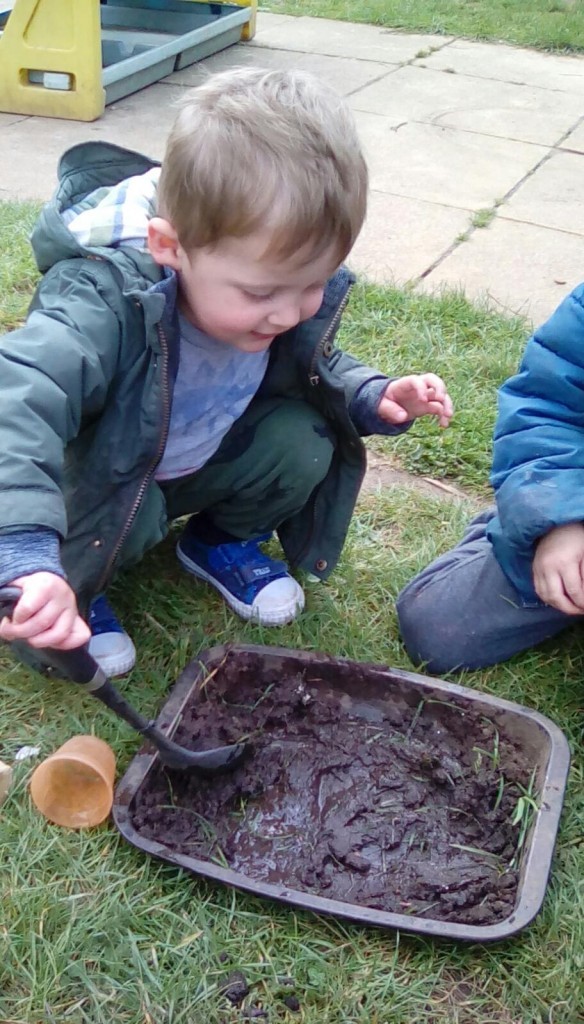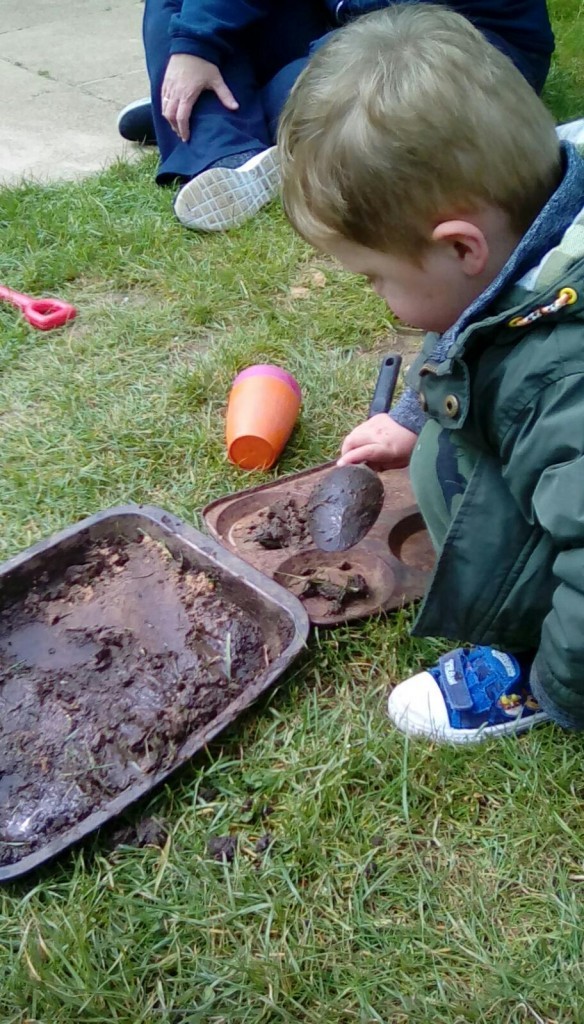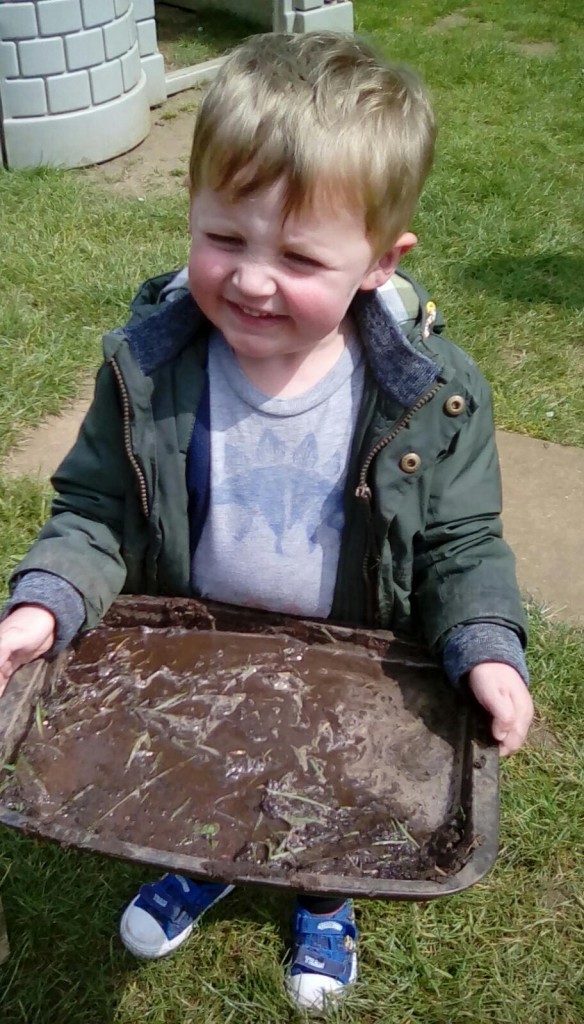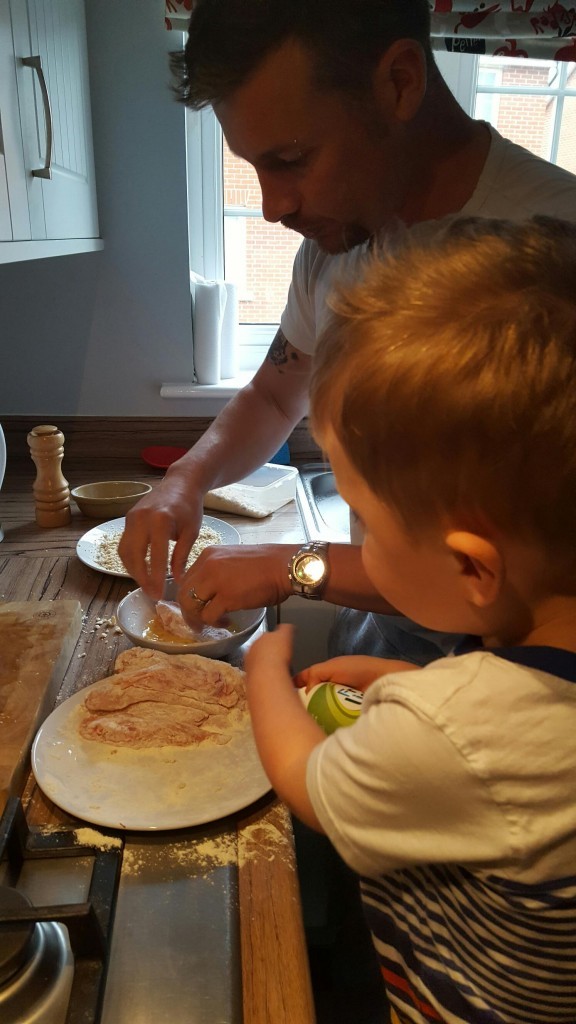It would be helpful to read Appendix 1 (see 'references' below) before you read the article!
In this first piece, I am looking at the question ‘What are next steps?’ and through my research it became clear to me that for young babies and children pretty much everything is ‘a next step’. When you are a child you are a sponge for new information and new experiences and to identify one as more important than another seems somewhat clumsy. Obviously, certain things appear sequential – babies need to develop some core strength in their muscles (PD 0-11) before they can begin to roll over, push up from the floor and move to crawling (PD 8-20). If children acquire some of these skills non-sequentially it can be tricky. A baby I know ‘missed out’ the crawling phase and went from sitting to standing. This was great until he realised he couldn’t get his hands on small toys which had rolled under low furniture – he couldn’t manoeuvre himself on the floor – he could cruise and walk, or sit. He had to learn to crawl after learning to walk – so clearly sometimes the order of skills acquisition does matter!
But other ‘next steps’ don’t seem to be so ‘order dependant’. Does it matter if you can’t balance on one foot (PD 30-50) but you can kick a ball as you are running (PD 40-60+)? Does it matter that you learnt to kick before you learnt to balance well when you were standing still? This is why we, at the Foundation Stage Forum, are adamant that the Development Matters document should be taken as a broad guide to aid thinking, rather than a list of skills or behaviours to be achieved before a child is finally ‘finished’! Nancy Stewart’s article Development Matters: A landscape of possibilities, not a roadmap covers exactly this idea. Children develop at different rates and not necessarily in straight lines – they surge ahead in one area whilst lagging in another. They might miss out whole lists of Development Matters bullet points and then their skills might suddenly reappear in a different set of age/stage descriptors. Nancy is clear, we must look at the child – what do they need, which next steps would help them progress? Not, which bullet point comes next in the list?
Through my research I began to see steps in learning falling into distinct groups. I saw that there are those steps in learning that a child (if there are no developmental concerns) might reasonably be expected to achieve naturally – as part of their gradual development. For example, a child will, in time, be able to settle him/herself to sleep. There aren’t many adults who do not have this skill and they may not necessarily have been taught it; it comes in time. The careful attention of a supportive and nurturing adult might make the process quicker for a child, but on the whole, they will get there in their own time. Then there are the next steps that are skills based, things that won’t just happen ‘in time’ and will certainly need some element of teaching, either from an adult or from a peer. Such things as learning to ride a bike, or learning to swim might fall into this category. I have a friend who can’t swim and who tells me “Oh! I never learnt” – I wonder, is that the same as ‘I was never taught?’. Then we have the next steps that stem from a child’s interests and dispositions, staff might look here to extend a child’s enjoyment or engagement by providing more resources or tools to keep them stimulated and motivated.
I was encouraged therefore, on reading Kathy Brodie’s book (Brodie, 2013), to see that she too had identified that next steps fall into distinct groups. Brodie’s groups list as follows:
1. Child development
2. Extending an interest
3. Embedding a learning point
4. Personal social and emotional development (PSED)
Brodie makes the point that it is our knowledge of the child that leads us to the most appropriate ‘next step’ for them. To illustrate this, in her chapter about writing next steps Brodie describes asking staff to plan next steps for a child who has enjoyed sticking a pattern of plastic jewels onto a small cardboard box. Finding that staff all come up with their own, equally valid, next steps it becomes clear that the difference between them, and key to deciding which is the correct ‘next step’ is the key person’s understanding of what is ‘right’ for that child at that particular time. You will see in the observation example ‘Bobby’ (see Appendix A) that there are many possible avenues that the next steps could have taken. Using Kathy Brodie’s distinct ‘next step’ types we might suggest the following:
1. Child development: Bobby could develop his sense of the need to keep himself safe (next step aiming for PD/H+SC 40-60+e)
2. Extending an interest: Bobby could create a role play café with his friends and might show some interest in using money to pay for meals or developing some early writing skills as he creates menus and recipes (next steps aiming for M/N 30-50d, L/W 30-50d)



(Photos) Bobby's Mud cake
3. Embedding a learning point: Bobby could consolidate his skills using some tools, such as spoons and sieves and develop his skills using newly introduced ones, such as a hand whisk (next step aiming for PD 30-50s)
4. Personal social and emotional development (PSED): perhaps Bobby could teach some of his friends some cooking techniques, they could make pancakes or goujons at nursery with Bobby taking the lead (next step aiming for PSED/MR 40-60+e)


(Photos) Bobby playing in the sand Cooking with Daddy
Evidently there are different directions that Bobby’s key person could take his learning, which one is chosen will depend of their knowledge of Bobby and will require some reflection on what skills and dispositions are more pertinent at this point in time. Working in partnership with parents and carers is vital too for identifying the most appropriate next steps. Parents and carers might offer different insights into a child’s developmental progression. There is much research that tells us that children do better when there is a shared understanding of their needs and a shared commitment to help them do well.
Choosing a next step should never be an arbitrary decision. There always needs to be consideration and reflection about what is needed. Vygotsky, quoted in Bodrova and Leong (2007), explained his model ‘Zone of Proximal Development’ as being:
“(the) distance between the actual developmental level as determined by independent problem solving and the level of potential development as determined through problem solving under adult guidance or in collaboration with more capable peers” (Vygotsky, 1978)
So, a next step needs to be harder than something the child can already do independently, it needs to be hard enough that they are challenged, but can do it with support (called scaffolding), but not so hard that they become frustrated and give up. With this in mind, looking back at the possible next steps I identified for Bobby, I might say that he will be able to manage #1 if I remind him about washing his hands and washing his ingredients (if required) – he doesn’t need me to help him wash his hands; he does need me to help him remember. #2 will need more focused input from me as I help Bobby write his menus, count out coins and give change to his customers. Bobby could be left alone to explore and investigate the hand whisk #3. He’s unlikely to become frustrated about being unable to stir his mixture if I make sure that he still has access to the tools he is confident using; if he shows interest in the whisk I can model a technique for him and then let him have a go himself. With #4, Bobby will only need me to prompt him to remember his methods – he may need me to help him ‘manage’ the children in the group if they are very interested and keen.
If I were Bobby’s key person I wouldn’t plan to do all these things – I wouldn’t necessarily write them down – I would just have them in mind as things to try if Bobby’s interest in cooking and creating continues. A recent article by Alistair Bryce-Clegg (Bryce-Clegg, 2017) warns us against ‘over doing’ thematic planning. For example, if I were to plan all of Bobby’s nursery experience around cooking he’d probably go right off the whole idea! It’s important to decide which next step is most appropriate and then try and keep it in mind for all of Bobby’s experiences, not just the cooking ones. So, I might have #1 in mind as I remind Bobby about hand washing after using the toilet, before meals, after messy play and after garden time – nothing to do with cooking – but it is a crucial development point that permeates much of Bobby’s day. Similarly, I might plan some fine motor skill activities with tweezers, jointed chopsticks and water sprays, knowing that when it’s the ‘right time’ to teach Bobby how to use the hand whisk (#3) his finger muscles will be ready to work hard.
Having decided which next steps I want to focus on for Bobby I will continuously watch and review his progress and then I will change and adapt them as I go along. This question of how and why next steps might need changing will be considered in the next piece. The next piece will also consider different pedagogical approaches such as ‘In the moment planning’ and long, medium and short term approaches to planning for individual children.
Hopefully through this thorough examination of the observation – next step planning process you have developed your understanding of what, in early years, we mean by ‘next steps’. It’s a huge research area but the books mentioned in the references section should provide good starting points if you would like to find out more.
References
Appendix 1
Identifying patterns of play (Bobby 34-36 months over course of obs)
The overview of these observations, taken together, give rise to the possible next steps 1,2,3 and 4 mentioned in the article.
22nd April
On Friday night Bobby and Daddy made dinner. They made the whole family chicken goujons. Bobby loves cooking with Daddy and we all thought they were yummy!!
Assessment area possibilities: UW/P+C 30-50e, PD/M+H 30-50e, PSED/SC+SA 30-50e, PSED/MR 30-50e
4th May
This morning in the Lions’ room, the playdough was out for the children to explore. Bobby picked up a piece of playdough and used the rolling pin to make it flat. Bobby then picked up a knife and began to cut his playdough and placed the pieces he had cut off into a cupcake case. I asked Bobby what he was making and he said, "a strawberry cake". Bobby spent a period of time at the table and enjoyed exploring the playdough.
Assessment area possibilities: PD/M+H 30-50e, EAD/BI 30-50e, EAD/E+UMM 30-50e, CL/S 30-50e
4th May
Bobby independently chose to make his own "mud cake". Bobby began by selecting a baking tray, confidently scooping his mud with a cooking spoon. He filled up his baking tray, wanting to add to some water. Independently, Bobby used a sponge to soak up some water from the water tray, once his sponge was full with water, Bobby squeezed the water out onto his mud cake. Proud of what he had just done, Bobby continued. Bobby asked to see the pictures I had taken of him creating his mud cake, I asked Bobby what he was holding in his hands, confidently responding "a sponge" I asked Bobby why? Responding, he said "to get the water out". When Bobby had finished, he wanted to make "orange juice" scooping the sand into a cup. Bobby then placed a Lego brick on top of his "orange juice" and began to use it as a straw, pouting his lips. Bobby really enjoys exploring in our mud kitchen, exploring different aspects of his imagination as he begins to cook!
Assessment area possibilities: PD/M+H 30-50e, EAD/BI 30-50e, EAD/E+UMM 30-50e, CL/S 30-50e, PSED/MR 30-50e
June 1st
This morning in Lions, we decided to explore the side garden. Bobby noticed there was a big tuff spot of sand on the ground. Bobby picked up a spade and began to scoop up sand onto his plate. I asked Bobby what he was making and he said, "I'm making you pancakes". I asked Bobby what he put on top of my pancakes and he said "sugar". Bobby then took his pancakes and went to put it in the 'oven'. Whilst doing this Bobby sang to himself "put it in the oven for baby and me" over and over. Bobby enjoyed exploring the sand and spent a long period of time doing so.
Assessment area possibilities: PD/M+H 30-50e, EAD/BI 30-50e, EAD/E+UMM 30-50e, CL/S 30-50e, PSED/MR 30-50e
June 22nd
The boys decided to make a chocolate cake at the mud kitchen in the back garden. Together they discussed what they needed to make a cake, Nigel said to Bobby, "butter, egg, sugar, put stones in there too", Bobby then replied, "put it in oven in couple minutes". They boys worked together well and discussed their ideas throughout their play. They showed a good understanding of turn taking and working as a team.
Assessment area possibilities: PD/M+H 30-50e, EAD/BI 30-50e, EAD/E+UMM 30-50e, CL/S 30-50e, PSED/MR 30-50e
Rebecca. 2017
Further references:
Early Education. (2012) Development Matters in the Early Years Foundation Stage (EYFS). London. Early Education.
Brodie, K. (2013) Observation, Assessment and Planning in the EARLY YEARS. Maidenhead. Open University Press.
Stewart, N. (2016) Development Matters: A landscape of possibilities, not a roadmap [Online], The Foundation Stage Forum. Available at http://eyfs.info/articles/_/teaching-and-learning/development-matters-a-landscape-of-possibilit-r205 (Accessed 28/7/2017)
Bryce-Clegg, A. (2017) Alistair Bryce-Clegg talks Child Led Learning in the Early Years [Online], First Discoverers. Available at http://www.firstdiscoverers.co.uk/alistair-bryce-clegg-child-led-learning-early-years/ (Accessed 28/7/2017)
Bodrova, E and Leong, D. (2007) Tools of the mind. The Vygotskian Approach to Early Childhood Education. 2nd Ed. New Jersey. Pearson.




Recommended Comments
There are no comments to display.